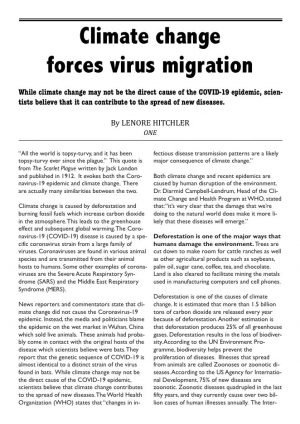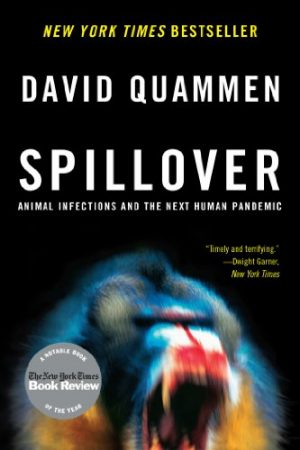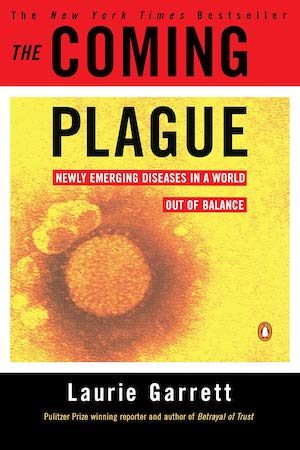 “All the world is topsy-turvy, and it has been topsy-turvy ever since the plague.” This quote is from The Scarlet Plague written by Jack London and published in 1912. It evokes both the Coronavirus-19 epidemic and climate change. There are actually many similarities between the two.
“All the world is topsy-turvy, and it has been topsy-turvy ever since the plague.” This quote is from The Scarlet Plague written by Jack London and published in 1912. It evokes both the Coronavirus-19 epidemic and climate change. There are actually many similarities between the two.
Climate change is caused by deforestation and burning fossil fuels which increase carbon dioxide in the atmosphere. This leads to the greenhouse effect and subsequent global warming. The Coronavirus-19 (COVID-19) disease is caused by a specific coronavirus strain from a large family of viruses. Coronaviruses are found in various animal species and are transmitted from their animal hosts to humans. Some other examples of coronaviruses are the Severe Acute Respiratory Syndrome (SARS) and the Middle East Respiratory Syndrome (MERS).
News reporters and commentators state that climate change did not cause the Coronavirus-19 epidemic. Instead, the media and politicians blame the epidemic on the wet market in Wuhan, China which sold live animals. These animals had probably come in contact with the original hosts of the disease which scientists believe were bats. They report that the genetic sequence of COVID-19 is almost identical to a distinct strain of the virus found in bats. While climate change may not be the direct cause of the COVID-19 epidemic, scientists believe that climate change contributes to the spread of new diseases. The World Health Organization (WHO) states that “changes in infectious disease transmission patterns are a likely major consequence of climate change.”
Both climate change and recent epidemics are caused by human disruption of the environment. Dr. Diarmid Campbell-Lendrum, Head of the Climate Change and Health Program at WHO, stated that: “it’s very clear that the damage that we’re doing to the natural world does make it more likely that these diseases will emerge.”
Deforestation is one of the major ways that humans damage the environment. Trees are cut down to make room for cattle ranches as well as other agricultural products such as soybeans, palm oil, sugar cane, coffee, tea, and chocolate. Land is also cleared to facilitate mining the metals used in manufacturing computers and cell phones.
Deforestation is one of the causes of climate change. It is estimated that more than 1.5 billion tons of carbon dioxide are released every year because of deforestation. Another estimation is that deforestation produces 25% of all greenhouse gases. Deforestation results in the loss of biodiversity. According to the UN Environment Programme, biodiversity helps prevent the proliferation of diseases. Illnesses that spread from animals are called Zoonoses or zoonotic diseases. According to the US Agency for International Development, 75% of new diseases are zoonotic. Zoonotic diseases quadrupled in the last fifty years, and they currently cause over two billion cases of human illnesses annually. The International Livestock Research Institute found that more than two million people die every year from zoonotic diseases.
Besides leading to epidemics, deforestation destroys wildlife habitat. According to a study published in the journal Proceedings of the Royal Society B, deforestation leads to a lower number of large mammals. Therefore, because they have less predators, the animals that harbor pathogens increase in number. Ecologist Felicia Kessing, professor of biology at Bard College in NY, adds that “When biodiversity declines—particularly as a result of habitat loss—it doesn’t do so in a random way; certain kinds of species are more likely to disappear than others. The ones that tend to thrive after biodiversity declines are the ones that are also most likely to give us new diseases.”
A study published in Nature reports that the species that survive are more likely to host diseases that are even more virulent. Smaller sized species, such as rats and other rodents, increase in population because they are more resilient to degraded habitats or can thrive among humans. This leads to increased human exposure to disease. Rodents account for more than 60% of the infections transmitted from animals to people. The warmer temperatures and higher rainfall associated with climate change combined with the loss of predators make the rodent problem even worse. Rodents are not the only carriers of disease. Bats are frequently the original hosts of viruses. One study found that bats harbor more than 3,200 strains of coronaviruses. In 2018, biologists at the University of Warsaw published “Bats, Coronaviruses, and Deforestation” which linked the destruction of bat habitats to the spread of coronaviruses. Additionally, climate change forces animals to migrate north to cooler environments resulting in the disruption of the ecology of both their new and former habitats. Scientists state that climate change causes bats to migrate, and fruit bats have already done so. Still more scientists corroborate the relationship of epidemics to both climate change and environmental change. Carlos Zambrana-Torrelio, vice president for conservation and health at EcoHealth, analyzed over 704 different infectious disease outbreaks between 1940-2008 and found that deforestation preceded pandemics.
Veterinarian Christine Johnson, PhD, is the Director of the EpiCenter for Disease Dynamics at the One Health Institute, an interdisciplinary epidemiological program at the University of California, Davis School of Veterinary Medicine. She stated that recent major epidemics, such as SARS, COVID-19 and Ebola spread to humans from wildlife undergoing climate change and displacement from their original habitat.
 David Quammen, author of Spillover: Animal Infections and the Next Pandemic, stated that “We disrupt ecosystems, and we shake viruses loose from their natural hosts. When that happens, they need a new host. Often, we are it.” There are many species of animals that harbor pathogens that could cause the next epidemic. According to the Intergovernmental Science Policy Platform on Biodiversity and Ecosystem Services, there are 1.7 million viruses in mammals and birds that could potentially infect humans.
David Quammen, author of Spillover: Animal Infections and the Next Pandemic, stated that “We disrupt ecosystems, and we shake viruses loose from their natural hosts. When that happens, they need a new host. Often, we are it.” There are many species of animals that harbor pathogens that could cause the next epidemic. According to the Intergovernmental Science Policy Platform on Biodiversity and Ecosystem Services, there are 1.7 million viruses in mammals and birds that could potentially infect humans.
In addition to the disruption of animal habitats leading to disease, the health of animals is also endangered by climate change. Rising temperatures stress immune systems making them less effective in combatting pathogens. Scientists in Tokyo reported that mice subjected to warmer temperatures were less able to resist influenza. Jeanne Fair, biosecurity and public health expert at Los Alamos National Laboratory in New Mexico pointed out that stressed animals are more susceptible to disease. She stated that “When you’re stressed, you’re immunocompromised.” More viruses are then shed infecting other animals and people. To exacerbate matters, as temperatures warm, viruses are adapting to hotter environments.
Erratic weather caused by climate change also increases human vulnerability to pathogens and increases the virulence of these pathogens. The 2017-2018 flu season was both longer than usual and infected more people. A study in Environmental Research Letters linked this particular viral outbreak to extreme weather and unusual swings in temperature.
Climate change and new epidemics have been predicted by scientists for quite a while. These threats have been ignored, and preventative measures have not been undertaken. Scientists have warned about climate change since at least the mid 1960s. A Federal Sciences Report in 1965 warned President Lyndon Johnson that burning fossil fuels adds carbon dioxide to the atmosphere. This would cause “marked changes” in climate. This report is fifty-five years old! Scientists have continued to alert every president since then. Warnings about future pandemics have also been sounded for decades. Various authors discussed how climate change and human disruption of the environment were going to lead to epidemics.

Some books on the subject are A Dancing Matrix written by Robin Marantz and published in 1993, The Coming Plague—Newly Emerging Diseases in a World Out of Balance written by Laurie Garrett and published in 1994, and Emerging Viruses, edited by Stephen Morse and published in 1996.
Another similarity between Coronavirus-19 and climate change is that both disproportionally endanger racial minorities and the poor. A study of the fifteen largest US cities found that climate change would likely increase heat-related deaths by at least 90%. Research has shown that people of color are twice as likely to perish in a heat wave. Racial minorities and the poor are more likely than white people to live near oil refineries. Refineries contribute to climate change and also release many air pollutants. Dr. Aaron Bernstein, MD. is Director for the C-Change Center for Climate, Health, and the Global Environment at Harvard University’s School of Public Health. He stated that “We have lots of research that shows that air pollution, particularly particulate matter air pollution, increases the risk of people getting sick with bacterial and viral pathogens that cause pneumonia, and that people who are exposed to more air pollution get sicker when they get exposed to those kinds of pathogens.”
He also stated that “A study done on SARS, a virus closely related to COVID, found that people who breathed dirtier air were about twice as likely to die from the infection.” Another study reported that even a small exposure to air pollution in the years preceding the COVID-19 epidemic was linked to a 15% higher risk of death. In 2002, 68% of African Americans lived in counties that violated federal air pollution standards. An air pollution study was published in the Proceedings of the National Academy of Sciences. Researchers found that fine particulate matter (PM2.5) is disproportionately caused by the consumption of goods and services by white people but disproportionately inhaled by African American and Hispanic minorities. On average, African Americans are exposed to about 56% more PM2.5 pollution than caused by their consumption. For Hispanics, it is 63%.
Air pollution is not the only adversity facing ethnic minorities and the poor during the COVID-19 epidemic. They are much more likely to be essential workers. Because of the nature of their work, they are more exposed to those harboring the disease than other people. Essential workers include those who labor in the food processing industry, grocery and pharmacy employees, bus drivers, and delivery truck drivers. Essential workers also labor in warehouses and are employed in the health field and personal care. Many essential workers lack protective gear, hazard pay, and lack health insurance. They frequently are deprived of paid sick days which means they feel forced to go to work and then they could potentially expose others to the virus.
The following statistics of deaths from the Coronavirus-19 came from various sources published during April and May. Numbers change from day to day, but they can show who is perishing from the disease. In the entire country, African Americans accounted for 50% of deaths, even though they comprise only 13% of the population. From the west coast to the east coast, African Americans have high death rates from the virus. Los Angeles County, with some of the worst air quality in the country, had a 50% higher death rate than the rest California. In Louisiana, African Americans comprise around a third of the population, but 70% of the fatalities. The Midwest follows the racial pattern of higher virus death rates. In Chicago, Illinois, African Americans represent 33% of the population, but have a death rate of 70%. In Illinois, they comprise 15% of the population, but 42% of deaths. In Milwaukee County, Wisconsin, African Americans make up 26% of the population, but account for 81% of deaths. Wayne County, Michigan, includes Detroit, which according to the American Lung Association had the country’s twelfth worst soot pollution in 2019. The death rate was 250% higher than Michigan’s average. In both Michigan and Wisconsin, African Americans represent 14% of the population, but 40% of deaths. New York City also follows the pattern. African Americans and Latino residents died at twice the rate of white people. These extensive statistics reflect the relationship between inequality and the disproportionate death rates from the epidemic. Death and human suffering are caused by both the Coronavirus-19 epidemic and climate change. They are interrelated even though the relationship between them is not linear like a nuclear family parent-child relationship. It is more like an extended family. Deforestation causes both climate change and the disruption of habitats leading to the spread of new epidemics. Burning fossil fuels leads to both climate change and air pollution which in turn leads to higher death rates from the virus.
The well-known poem by John Donne entitled “No Man is an Island” provides a perfect metaphor of how both Coronavirus-19 and climate change affect humanity. John Donne lived during The Little Ice Age, which was a time of climate change. Therefore, it is ironic that he refers to a clod being washed away by the sea, which in the present day evokes coasts inundated by rising sea levels caused by climate change.
While sick and isolated during an epidemic, Donne listened to church bells ringing for those who had perished. He became aware that everyone is connected and what hurts others also hurts us. Donne felt compelled to write:
No man is an island entire of itself; every man
is a piece of the continent, a part of the main;
if a clod be washed away by the sea, Europe
is the less, as well as if a promontory were, as
well as any manner of thy friends or of thine
own were; any man’s death diminishes me,
because I am involved in mankind.
And therefore never send to know for whom
the bell tolls; it tolls for thee.
Lenore Hitchler



